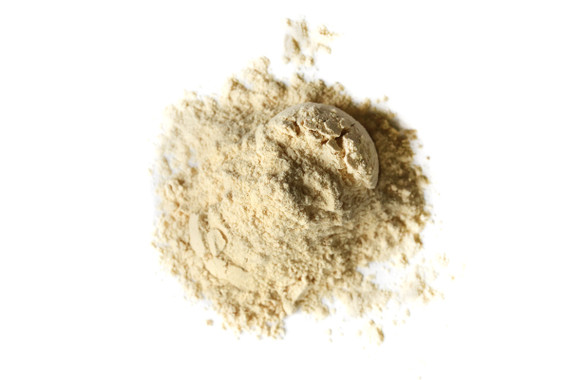Allium sativum may be one of the most popular and globally recognized of all the herbs. Aromatic and pungent, garlic is used to flavor foods from all over the world. Garlic is also commonly employed for its wellness supporting properties and is used extensively in Traditional Chinese Medicine and Ayurveda. Our dried minced garlic has the largest grind of our garlic offerings and can be infused in oils or used in cooking.
One of the single most popular herbal preparations and seasonings of all times, garlic with its intense odor, has a strong reputation that precedes it. It has been used literally all over the world to flavor foods, to ward off evil spirits, as offerings to ancient deities, and for its medicinal bounty.
Garlic helps maintain healthy cholesterol levels that are within normal range.*
Garlic is a perennial that is often grown as an annual and is a member of the Lily or Liliaceae family. It has grayish-green foot long leaves and flower stalks which support whimsical globular clusters of small white flowers that are very similar to those of other members of the Allium genus such as onion or chive. The generic name Allium is Latin for garlic and the specific name sativum refers to the fact that garlic is highly cultivated. The common name, garlic, is Anglo-Saxon in origin, and is derived from 'gar' (spear) and 'lac' (plant), and was related to its leaf shape.
Garlic is thought to have been cultivated for at least 5,000 years in the Middle East. In fact, it has been cultivated for so very long that determining its origin is complicated. Quite possibly it may have originated in the Kirgiz Desert of west-central Asia, but at any rate, it is now very easy to come by the world over. China is the leading producer, by far, followed by India, South Korea, Egypt, Russia and then the U.S. Within the U.S., the state of California produces the highest yield.
Garlic has been employed as a food and herbal preparation for thousands of years and was mentioned by Virgil (70-19 BCE) in his book of mythic poetry, The Eclogues. Its virtues have also been praised by the ancient Greek physician Hippocrates, the ancient Greek philosopher and botanist Theophrastus, and then later the ancient Roman philosopher and naturalist, Pliny.
Magically, garlic was believed to impart the powers of protection, and could be used to protect one from theft and even to exorcise evil spirits. It was associated with the ancient Greek deity Hecate, was eaten at festivals in honor of her, and also left at crossroads, on a pile of stones, as a offering to her. It was one of several plants that was worn to guard against illness, and is utilized even still to absorb negative energies. Garlic is considered to be one of the more protective natural substances available and thus sailors would often carry a clove to protect against accidents at sea. In the Middle Ages, soldiers would also wear a protective clove. It was advised to put a clove over the door of a home to repel thieves, envious people, and evil in general. It was also thought that garlic incites lust; in Ayurveda (ancient Indian healing system) celibate yogis are discouraged from eating garlic for this reason, and in fact, Pliny mentioned garlic's aphrodisiac qualities as well and suggested mixing it with wine and coriander for these purposes.
Galen, a Greek physician and philosopher practicing in Rome around 162 CE, considered garlic to be a cure-all. In the twelfth century, it was suggested that field laborers who had too much sun exposure try garlic. Eventually, herbalists from the sixteenth century on began to consistently mention its beneficial qualities.
It has been cultivated for thousands of years and used throughout many cultures. It is extensively utilized in both Ayurveda and Traditional Chinese Medicine (TCM). In Ayurveda, it is referred to as 'rasoon' or 'lasunam' is considered to be energetically hot and drying and pungent in taste, bringing balance to the cooler vata and kapha constitutional body types. In TCM, it is called 'da-suan' and is used to support healthy digestion.
Garlic is energetically hot and drying with a pungent taste. Powdered, dried bulb for cooking or encapsulation. The German Commission E approved the use of garlic to support balanced cholesterol levels and to support a healthy vascular system. Several studies on garlic date back into the 50's and even before.
Precautions
Consult a qualified healthcare practitioner if using in higher doses used for therapeutic purposes and taking any medications. Garlic may cause gastrointestinal disturbance in sensitive individuals or in persons with acute or chronic stomach inflammation. We recommend that you consult with a qualified healthcare practitioner before using herbal products, particularly if you are pregnant, nursing, or on any medications.
*This statement has not been evaluated by the Food and Drug Administration. This product is not intended to diagnose, treat, cure, or prevent any disease. For educational purposes only.











